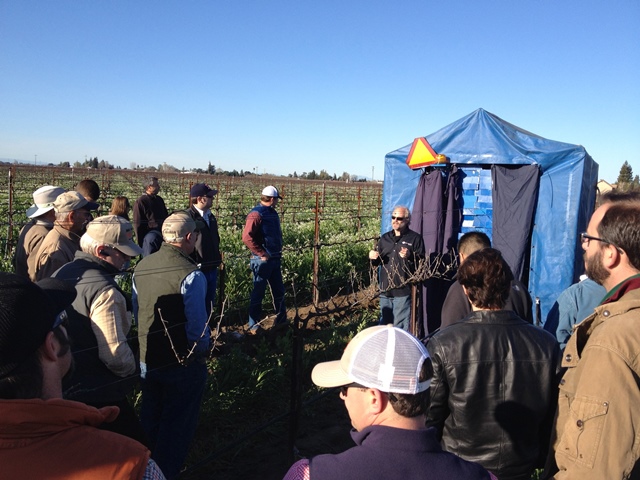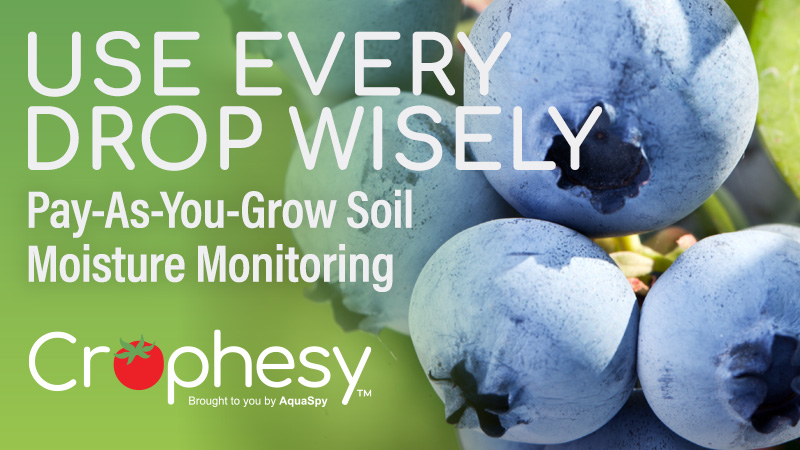Cutting Down on Biggest Grape Growing Expense

Bret Wallach, president of Vision Robotics Corp., demonstrates the robotic pruner to grape growers. The pruner straddles the row and is blue. Blue does not occur in grapevines, so the visioning system can subtract the background from the grapevines.
Vision Robotics Corporation of San Diego, CA, has been working with the team of researchers from Purdue University and Penn State to develop an automated robotic grapevine pruner. Why grapevines?
“Grapevines are a simple canopy structure,” Peter Hirst of Purdue University says.
Tony Koselka, co-founder of Vision Robotics, says another factor is that although harvest labor is the most costly expenditure for fresh-market fruit, pruning is the biggest expense for winegrapes. And, he says, demand for his automated pruner has never been higher.
“We’ve gotten more calls in the last six months because labor has become very tight,” he says.
But, what really matters to growers is cost. According to Jayson Harper, Professor of Agricultural Economics at Penn State, vineyard automated pruning can be done for between $202 and $420 per acre, which is comparable to hand labor.
“The cost of a grapevine pruner is likely going to be in the $80,000 to $160,000 range. The economics really depend on the number of weeks of use and the operating speed of the machine. To get the cost of grapevine pruner down to the cost of hand labor means you need to be able to use the machine for 12 to 16 weeks per year and operate the machine at 7.4 to 9.0 feet per minute,” Harper says.
The robotic pruner does bilateral spur pruning for winegrapes and the settings can be customized based on the number of spurs a grower wishes to leave. The pruner makes one cut every 2.5 seconds.
“Our model was pretty good; we were cutting about 85% of canes at their base properly,” he says.
Koselka says the team at Vision Robotics has been working on improving the modeling and speeding up the processing — which he says is about half the speed that they anticipate for the production pruner.
The next step, though, is expensive, and that has brought the project to a pause. The team needs to build a pre-production unit because the prototype they have been working with has served its purpose, but is not to the point where a commercial device would be.
“To this point, we’ve been funded primarily by growers. They are great partners and have a lot of interest in doing it. The problem is we’re now moving to expensive things,” he says. “How much do growers want to put in and fund is the issue?”










